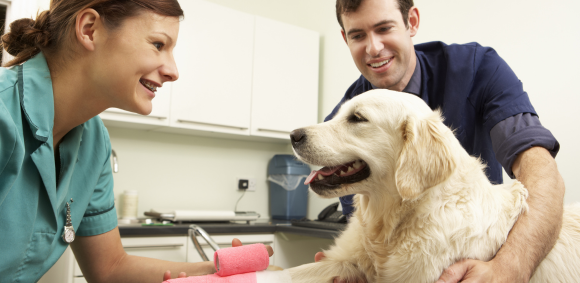Supervising a student veterinary nurse (SVN) is a rewarding responsibility, but it can also raise questions about what’s appropriate to expect at each stage of their veterinary nurse training. Some students come in with a lot of confidence; others may be quiet, cautious, or unsure. Without clear expectations, it’s easy for SVNs to feel overwhelmed or for practices to underutilise them unintentionally.
This article offers a realistic look at what students are typically ready for at different stages of their veterinary nurse training and how you can strike the right balance between challenge and support. It’s also a reminder that learning is a process, and every student progresses differently.
Understand the stages of veterinary nurse training
Knowing what your student has covered academically will help you tailor their practical experience. The veterinary nursing curriculum tends to build gradually — with first-year students focusing on observation and essential nursing techniques, and second or third years tackling more advanced clinical tasks. It’s worth reviewing their college timetable or asking them directly:
- What modules or practical skills have they covered so far?
- Are there any upcoming assessments they need to prepare for?
- What do they feel confident doing and what are they still building?
This simple conversation can help shape realistic daily expectations and ensure your student gets opportunities aligned with their stage of learning.
What you can expect from a student veterinary nurse
SVNs are expected to develop steadily across their placement, but they are not fully qualified team members (yet). Here’s what you can reasonably expect from a student, with the understanding that confidence and competence may vary:
- A positive attitude and willingness to learn
- Professional behaviour and appropriate communication
- Engagement with feedback and supervision
- Gradual progress in key practical skills
- Honesty if they don’t know or aren’t confident
You can also expect them to be proactive within reason. Encouraging curiosity (e.g. asking questions, reflecting on cases, seeking clarification) helps students develop their critical thinking and grow into the veterinary nurse role.
What you shouldn’t expect
It’s important to avoid assuming that because a student has “been here a while,” they can perform at the level of a qualified veterinary nurse. They are still learning, so it’s critical to maintain appropriate supervision and support. You shouldn’t expect:
- Full independence in tasks without appropriate sign-off
- Knowledge of all practice protocols or equipment
- The ability to manage complex cases alone
- Confidence in new or rarely-practiced procedures
- The same pace, stamina, or clinical judgement as qualified staff
Setting expectations too high can lead to stress, burnout, or fear of making mistakes. It’s better to build confidence gradually than to risk a student feeling out of their depth.
How to avoid underutilisation
On the flip side, some students aren’t given enough opportunities. This is often because team members are unsure what they’re allowed to do. Under-challenging a student can lead to frustration and slow development. To make sure your student gets the most from placement:
- Review their current skill level with them and plan opportunities accordingly
- Invite them to shadow more experienced staff in new areas
- Let them repeat tasks they’ve learned in college to reinforce learning
- Give them small responsibilities with supervision, such as preparing a surgical pack or supporting in consults
Small, consistent exposure helps students grow in competence and confidence. Always make sure you’re working within the RCVS guidelines for student scope of practice and keeping appropriate records in their Nursing Progress Log (NPL). If you’re unsure of what your responsibilities are at any point, your training provider can provide advice and guidance.
Communicate and review regularly
Students thrive when expectations are clear, consistent, and regularly reviewed. You can support their development by having open conversations about how things are going, what they feel ready to try, and where they need more support. Try to schedule:
- Weekly or fortnightly check-ins to reflect on progress
- Feedback sessions following assessments or key tasks
- Opportunities to talk about upcoming college deadlines or placements
If you’re unsure about whether a student is progressing as expected, don’t hesitate to reach out to your training provider for guidance.
How we support clinical supervisors / clinical coaches in practice
Helping students reach their potential is a team effort, and we’re here to help you as a clinical supervisor. Here’s what you can access through The College of Animal Welfare (CAW) as a clinical supervisor supporting our students:
- Free clinical supervisor training
Prepare for the role with confidence. Our supervisor training is available at no cost to CAW-affiliated practices. - Support from your dedicated IQA team
We’re always happy to advise on student capability, development plans, and appropriate supervision. - Access to discounted CPD
Our Clinical Supervisor Congress offers 7 hours of CPD and practical insight into best practice supervision. - Resources and forum access via our VLE
Use our online learning platform to access resources and connect with other supervisors for shared experience and advice.
Request a call back to discuss training SVNs in your practice.
Striking the right balance with a student isn’t always easy. However, with clear communication, realistic expectations, and a bit of flexibility, you can help them develop the confidence and skills they need to succeed.
Remember that supervision doesn’t need to be perfect, and when in doubt, you don’t have to go it alone. Your training provider is always there to guide, support, and help you get the most from your student placement.

